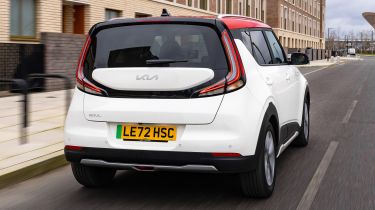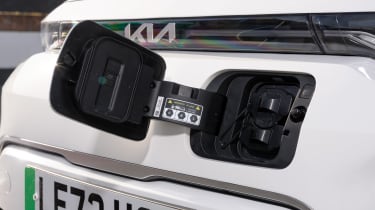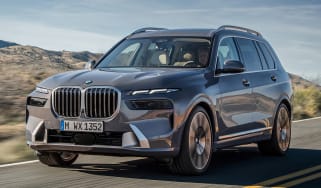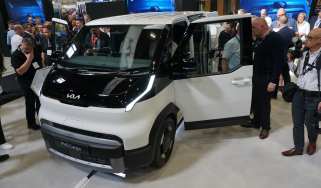Kia Soul EV review - Range, charging and running costs
The Soul EV’s range of up to 280 miles is impressive, however it’s not expected to retain much of its value

The Mk2 Soul EV has been fitted with a 64kWh battery since it launched back in 2019, but is now available with either a 39.2kWh battery in the Urban model or the 64kWh unit if you spring for the Explore version.
The Soul EV Urban has an official range of up to 171 miles, which is more than the Mazda MX-30 will go before it runs out of juice, but the cheaper, entry-level versions of the MG4 and MG ZS EV will go further still. Nonetheless, during our test drive of the Urban we were able to achieve around 4.2 miles per kWh; enough for a real-world range of just over 163 miles.
Kia also claims the Urban model will do 252 miles between charging sessions if you just drive in town. We expect closer to 200 miles of city driving is more achievable, so long as you’re gentle with the throttle, and use the strongest regenerative braking settings.
Meanwhile, the Soul EV Explore gets a much more impressive 280-mile range. We used a Soul EV with the same powertrain for our twin test against the Mazda MX-30, making no attempts to maximise efficiency and testing them both in cold temperatures which tends to eat up the range in EVs. Despite the conditions, the Kia easily recorded 3.9 miles per kWh, resulting in a real-world range of 253 miles.
Used - available now

2022 Land Rover
Range Rover Sport
38,200 milesAutomaticPetrol2.0L
Cash £37,995
2018 Audi
TTS
43,500 milesManualPetrol2.0L
Cash £20,495
2023 Tesla
New Model Y
35,970 milesAutomaticElectric
Cash £26,197
2018 BMW
M3
86,600 milesAutomaticPetrol3.0L
Cash £27,500The Soul EV’s charging port is located in the car’s nose. Plug either model into the 100kW+ rapid chargers that are becoming fairly common in the UK, a 10 to 80 per cent top-up thanks less than 50 minutes – not lightning fast, but you can still add a decent amount of range in the time it takes for a mid-road trip pit-stop.
Fully recharging the Soul EV Urban’s 39.2kWh battery using a typical 7.4kW home wallbox will take roughly six hours, or about 10 hours with the Explore model and its much larger powerpack.
Like all electric cars, the Soul EV is exempt from road tax (VED) and the London Congestion Charge until 2025, and it currently attracts rock-bottom Benefit-in-Kind (BiK) tax rates, which is great for company car drivers.
Insurance groups
The Soul EV Urban sits in insurance group 26, while the more expensive Explore model lands in group 31. That means getting cover could be expensive, though the MG ZS EV and Kia Niro EV do attract similar insurance ratings.
Check if your car needs an MoT and view its complete history with our MoT History Checker...
Depreciation
According to our latest expert data, the Soul EV should retain between 45 and 47 per cent of its value after three years and 36,000 miles. The Soul EV Urban is expected to retain more of its list price, but only just, and the Niro EV is expected to perform a lot better on the secondhand market, retaining up to 59 per cent of its list price after the same 36-month ownership period.
To get an accurate valuation on a specific model check out our valuation tool...










